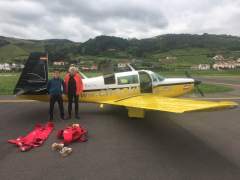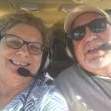Leaderboard
Popular Content
Showing content with the highest reputation on 02/06/2021 in all areas
-
My last post was in the classifieds section after our Ovation found a new home. A couple of folks asked what was next so here goes. As of late October, I have been working on getting used to flying a Baron 58. We looked at several 1980's legacy examples with the intention of converting to a Garmin panel but ended up connecting with this one by chance. It was newer and already had most of the avionics work we were looking for done. We completed the purchase in the summer of 2020 and then spent several months working on a little optional overhaul work, fixing cosmetics, and frustratingly, dealing with some significant deficiencies in the avionics install work that had not shown up in our pre-buy. As has often been said in this forum, buyer beware... just because a shop may hold prestigious dealership status for one manufacturer or another does not mean that the work they are doing necessarily meets the standards one would expect. Ultimately, we got the plane to the condition you see here and to say the least…I am a happy boy. Kudos to Clarence (M20Doc) and the folks at TriCity for their relentless attention to detail, depth of knowledge about fixing / maintaining aircraft, and enthusiasm. Thanks also, to Jasper and the lads at Mid-Canada Mods, for getting the avionics where they needed to be. I started flying the Baron in the Fall, and today marks my first 100 hours in the plane. I already had a MEL rating (thanks, Stu!), and with the help of my Mooney CFI, who also happens to teach in Barons full time, the transition went smoothly (thanks, Dave). I am still fine-tuning things and fly duel often, but my MIFR went well (thanks, Ed), and as you can see, I am starting to stretch the Barons' legs now. I kept the tail number, it's vain yes but I kind of like flying C-FUTR (See Future) and, with the help of those I have mentioned, a cast of many others who encouraged me (you meet the nicest people in aviation) and last but by no means least, my better half (couldn't have done it without you C!) I have arrived at and am flying in the future I had been aspiring to. Be well, everyone, fly safe….PS..yes, I miss the Ovation.6 points
-
Didn't go flying today. Beautiful weather, but cold. Had to move a few inches of ice built up in front of the hangar. Were it warmer I probably would have. Had I a passenger to go somewhere I probably would have. Had I somewhere to go, I probably would have. But just to go up by myself to do some landings, it was just too much. Bought a bottle of booze instead.5 points
-
Alan just sent me the GTX-33ES unit. The unit arrived quickly and very well packed. Everything was exact as per our agreement and the unit looks like new. Thank you Alan! Fabricio4 points
-
Checklists must be short to be effective. These FBOs with a 3 page checklist for a 172 runup are missing an important point. They are increasing by the chance of the most important items to be missed, buried among the excess. I’ve seen many students miss items on long checklists. Few piston planes need more than gumps for landing.3 points
-
Sigh....I've been following the "auto engine" in an airplane is "just around the corner" saga and debating with its fan-boys since the 1970's. Every decade the latest auto engine is touted as the cure to aviation engine woes (which, frankly, is just their high prices!). Ah, you say, those just were not sophisticated/modern like today's auto engines...I've heard that EVERY decade as the 'cogent' argument. So, now we're hearing how BOAT engines with CAST IRON cylinder heads the size of small cars provide plenty of cooling with closed-loop heat exchangers with an unlimited heat sink of WATER! Yeah, no doubt that proves auto engines will work great in aircraft Five decades and going...pass some more of that Kool-Aid!3 points
-
My GM 4.3L marine engine runs reliably but it’s crazy heavy and has an endless supply of coolant.3 points
-
It’s a better product for 90% of the people who fly them. 8,000 people able to drop almost a million dollars on a toy, those don’t strike me as dumb people buying into propaganda.3 points
-
Find someone who specializes in that....you'll be glad you did. Some things need to be done by the people that do what they do. Not saying it can't be done, just saying that if you like yourself even a little bit, you wouldn't put yourself through it. Had mine done by Paul at Weep-no-more. Glad I did. Not cheap to have done, but when it's done right, problems are solved. Only my opinion....Good luck.2 points
-
Thanks @carusoamfor the add. So, here's some links to get smart on visual glidepath systems such as PAPI and VASI. Flight planning to an unfamiliar airfield at night requires extra caution. Most visual lighting systems are designed for a 3 degree glidepath. If the GP is steeper than that, it is for obstacles. There are several techniques us Mooney drivers can use, even if we are not IFR certified. 1. At night, only fly into airfields with a visual glidepath system. If your home airfield doesn't have this system, then fly with someone who has night experience at your airfield to learn the visual illusions and "gotchas" associated. 2. If flying off of a PAPI or VASI, don't do a "duck in" and accept not landing on "brick 1" of the runway. 3. Dial in the ILS for that runway and use that as another tool, even if you are doing a night visual landing. 4. If the runway has an LPV approach and you have a WAAS receiver, you can use that flightpath to help you keep on a good visual glidepath. For those instrument rated, a way to reduce some risk is to file IFR and file to the IAF. If you have an EP, especially an engine related one, you are already on a frequency with someone who is trained to help. If you want to fly VFR during night VMC, then flight following is another way to have instant access to approach/center vs fumbling for the frequency while dealing with an EP. **These are just a few techniques and should not be confused with procedure** Lighting Systems – Precision Approach Path Indicators (PAPI) (faa.gov) AIM - Chapter 2. Section 1 (airresearch.com) Precision approach path indicator - Wikipedia2 points
-
2 points
-
I did about the same thing at KGPI once. Had some radio problems that got straightened out, then wound up over the airport at 12k. Airport is around 3k as I recall. Long downwind with the speed brakes and it worked out just fine.2 points
-
Tip of the day. Take it to a shop. All kidding aside there are some things worth having someone else do.2 points
-
2 points
-
In the past I have added some UV Dye and after though cleaning did one trip around the pattern and looked for leaks with the UV light. It’s pretty obvious where it is coming from.2 points
-
I think everyone at one time or another has taken off forgetting to set the elevator trim. And gotten to altitude only to realize the flaps are still in take off position. Or wondered why it was climbing slowly only to realize the gear was still down. Or taken off with the carb heat still on from last week. Or landing with the mixture still leaned. If you're guilty, raise your hand. Yep, typing with one hand. It is always a sobering reminder to use the checklist...and always put the gear down. Put your hands down now.2 points
-
Yep, when I ran 135 operations, I had an operational rule that unless you had three take-offs and landings in the last 30 days at a given field and you were landing at night, if it had an instrument approach, you had to fly the approach. I also had a list of "special airports" where you always had to fly the approach at night. Too many things can go bump in the night. It is an operational restriction I place on myself now.2 points
-
Alright, my last post didn't work too well, but here's a video of a puppy flight we did a few weeks back throughout Alabama.1 point
-
3) Ditch the switch and use the new lighted button (seen above) I'd vote for number 3 - I do believe STC call for a light of some kind somewhere to indicate on or off. They are tested to be OK if only one is deployed. (Just read previous post - they must have changed the lighting requirement - my '90 J just had one light center panel above yoke). check your install instructions on your new yokes and see what it says.1 point
-
1 point
-
It turned off once for me when I was descending at a high speed. I think it was at 185 to 190 KIAS. Thats all I've ever noticed.1 point
-
What a beautiful plane and I love the panel! It's super clean and has everything you could ask for. Enjoy your new ride!1 point
-
1 point
-
Or tanks. There was a lot of crossover between aircraft and tank engines in the 1940s. Same kinda thing, needs a reliable engine that makes a lot of torque at low rpm. The Lycoming O-435 six cylinder was a tank engine. It powered the M22 Locust. https://en.wikipedia.org/wiki/M22_Locust1 point
-
https://www.aircraftspruce.com/catalog/topages/skinWedge2.php This is the tool to use to get the panels off. It won’t scratch the panels. Work it in pointing away from the center of the panel, then move an inch to the side and do it again. When you are about half way around the panel the long way, you can pry on the panel and it will separate. It is a good idea to put aluminum tape over the panels before you start to do this. Just push the skin wedge through the tape.1 point
-
that was a beautiful video ! its a sad to see someone sell their baby1 point
-
I read somewhere they were called crowbar approaches - both due to the similar shape as well as you can toss a crowbar out the window and see who gets on the ground first.1 point
-
1 point
-
I recently had a leak from the pushrod gaskets. The oil was seeping into the upper cooling fins and then the cooling airflow from top to bottom was splattering it onto the intake tubes below. Wasn’t as much as yours. My mechanic pointed out the seep from the gasket into the fins. Before that it wasn’t visible to me. Reasonably easy fix.1 point
-
Sounds like a fast new Mercury engine! But I don't think any of us are ready to bolt a 689-lb engine onto the front of our Mooneys . . . .1 point
-
@Stetson20 Somebody put Scott D on your reading list.... Here is Scott D. Discussing the Skew T chart... used for icing info. Also showing 50kt winds at Mooney altitudes... Best regards, -a-1 point
-
Impressive, but 100,000 km at 200 kph is only 500 hours. I’ll be more impressed when it can do 2,000 hours.1 point
-
There is a great one. Flying High Performance Singles and Twins by John Eckalbar. If you want to learn engine management, then see if you can sign up for the Advanced Pilot Seminars usually put on in Ada, OK by the GAMI people, that or the online course. One of the GAMI people wrote a series of articles on all kinds of engine issues called Pelican's Perch, it is worth looking them up. Google should do it. For weather, you need to attend a Scott Dennestaedt seminar if he is still putting them on (age of COVID). There have been many changes in what is available to pilots in the way of weather reporting in the last decade. Learn the Skew-T-Log-P if you don't know it already.1 point
-
@RobertGary1 I probably did not say it clearly enough. As you have stated, "if you lose a coil, you lose that cylinder." I actually, intentionally, lose 3 of 6 cylinders in my Pilot every time it goes into "eco" mode using VCM (Variable Cylinder Management). Thanks for the clarification.1 point
-
Did you say that backwards or did I misread it? In a car if you lose a coil you lose that cylinder (assuming coil on plug as all modern cars are). In an airplane you lose a magneto and you find out at your next runup. -Robert1 point
-
I knew that this would come up. Indeed I am a fanatic of centerline take offs and landings! But on this occasion my thought was exactly that because of the wind I should be upwind... good to know that it was something that made sense.. Sent from my iPhone using Tapatalk Pro1 point
-
This is good. We now have a couple of tugs available to build (and/or buy in my case). MinniMooney's works with the drive wheel against the nose tire, and mine uses traction between the drive wheel and the ground.1 point
-
He owns a large beach house in Rehoboth Beach. Rumor has it that they built a helipad either on or near the property.1 point
-
1 point
-
Well he was complicit in his death. That was a factual report, perhaps you could read the relevant sections. The fact he sells used parts and flooded aircraft on here makes it relevant. Maybe you're not aware of that. But anything to make a buck, to some folks. from the report: "Before departure on a ferry flight, both previously damaged propellers were removed and replaced. An incorrect propeller was installed on the left position by a person with a revoked mechanic's certificate..... According to Mark W. Trent, he is a friend of the accident pilot and is not a FAA certificated airframe or powerplant mechanic. On the day of the accident, he was a passenger in another airplane occupied by the accident pilot and the accident pilot's father. They flew to the Panama City Airport and as later determined by Air Traffic Control, landed at 1311 hours. The replacement propellers were in the airplane with them. After arriving, he observed the accident airplane parked on the ramp; the accident pilot's father removed the left propeller which had been previously damaged, and installed a replacement propeller on the left engine, with the help of the accident pilot. Mr. Trent removed the right propeller which also had been previously damaged and installed a replacement propeller on the right engine, also with the help of the accident pilot....... The accident pilot's father made a verbal statement to the National Transportation Safety Board (NTSB) investigator, on May 3, 1999, that he inspected the airplane for the flight and made an entry in a booklet that was with the ferry permit paperwork in the wreckage that he inspected the airplane and it was safe for the intended ferry flight. He was advised that the booklet was not located in the wreckage and was asked to duplicate the entry that was made and to send it to the NTSB. He stated that he would provide a duplicate of the entry. On May 10, 1999, he was asked to send a duplicate of the entry that he initially reported he made in the booklet. He offered a nebulous statement that he would be fined by the Federal Aviation Administration (FAA) $250,000.00 whether he did or whether he did not provide to the NTSB a copy of the duplicate entry. He was asked for the entry; he refused to comply, and referred further inquiries regarding the duplicate entry to his attorney. On June 7, 1999, a statement dated June 5, 1999, reportedly signed by the accident pilot's father, Jerry Pressley, A & P certificate number 237587185, was sent via facsimile to the NTSB office located in Miami, Florida." other stuff1 point
-
From another thread about a Mooney snagging some power lines in the dark, I thought about making a few notes how I have tried to avoid incidents over the years. I flew from a small, 2800', poorly lit airport 40 years. Trees at both ends, power line at one end. At one time the power line was within 25' of the runway. It was relocated to the other side of a two lane road and lowered slightly and the area of the runway for additional clearance. Over a 15 year period a number of airplanes hit the line with landing gear and a prop or two. Several wheel fairings were damaged or torn off. All these happened in daylight as far as I know. About 20 years ago, the power line was moved a couple hundred feet further from the runway and ceased to be a problem. Airplanes started hitting trees. In the last 6 weeks before the airport closed, two airplanes caught a wingtip in a tree. An Arrow, the fiberglass tip was completely cleaned off. Again, daylight. What that power line or those trees never were able to grab an airplane and fling it hard to the ground is beyond me. When the wind blew directly from the west, it would cause a pretty substantial sink rate on short final to 17. That got a number of airplanes too. A Bonanza hit tail first trying to arrest the sink rate and wrinkled the fuselage. A Mooney hit hard enough to remove both lower gear doors. I saw one laying on the runway. I think the main doors were also bent. Again, in the daytime. There were also planes that stalled or otherwise lost control trying to plant it on the numbers. Others over ran the end of the runway after using up 2/3 the distance by flying the approach too fast. I aimed to plant the wheels firmly 3-400' feet from one end of the runway, 1-200' past the displaced threshold on the other. Landing on 17, my goal was to land, roll out, turn thru the grass and up the little grade to my hangar. Then tap the brakes to stop. 2800' is not short for our airplanes, just in our minds. I flew a lot at night, early morning departures and getting back whenever. Landing 17 was going into a black hole. In the dark, I was scared enough of those trees, the power line, the sink hole, the black hole and the relatively short runway that I was determined never to let any of those things happen to me. Fly the pattern the same every time, same power setting, same airspeeds, same altitudes, same aiming point, adjusting only slightly for landing weight. Pay attention to what the wind is doing. Steep approach, never shallow at that airport. Daylight was hard enough, nighttime, my concentration was always intense. Not too long after Al invented the internet, NTSB reports became available online. I read all the incident reports that involved Bonanzas (that's what I was flying then). What did someone do wrong to bend an airplane? I read all the GA fatal reports. What did they do? A few just don't make sense, a few are just unavoidable. But the majority the reports tell a sad tale of complacentcy, doing something beyond either personal or equipment ability, doing stupid stuff like buzzing the friend's house, VFR into IFR, etc. All I had to do to be safe was avoid doing all the dangerous stuff. You don't even need to be especially good or talented, you just need to avoid doing the stuff that bends metal. Over the years, sold the Bonanza, built an RV. Read all the RV incidents the NTSB wrote report on. Same deal as the Bonanza, except for more hotdogging incidents. Actually those hotdogging incidents are usually fatal. Make note here. Aerobatics gone bad. Seemed to be more engine failures, but otherwise pretty much the same problems are claiming the RV crowd, plus the aero aspect and sporty performance that temps hotdogging. Now, flying a Mooney, reading those reports, if you covered up the airplane type, Bo or Mooney, you couldn't tell the difference. Maybe a few more porpoise till the nose gear fails for the Mooney but it can be done in a Bonanza if you try. Otherwise, same pilot mistakes for either aircraft for the last 30+ years. Read the reports. Then don't do that stuff.1 point
-
I've wondered if that's effective in situations like this at night. Garmin says they follow a 3 degree glideslope from the threshold. That may have not helped in this case.1 point
-
1 point
-
Having owned 2 M20Js - one with speed brakes and one without — there are a lot of things that I would rate much higher on my want list than speed brakes. Skip1 point
-
I suspect that intentional jammers are covering all the main GPS, Galileo, GLONASS and BeiDou frequencies.1 point
-
1 point
-
1 point
-
Ryan, I haven't read through the entire thread but what I did read was great information. I was in your price range two years ago when I bought my J. If no one else has mentioned it, Jimmy Garrison is your friend contact him and he will put you on an email list with what he's got coming in. This is how I found my J. https://www.gmaxamericanaircraft.com/1 point
-
The intercooler does essentially three things. First, it cools the induction air by around 100 dF in cruise, allowing the engine to run cooler. Second, by bringing the induction air temp. down it eliminates the CDT redline as an issue. Third, it allows the turbo to work a little less hard. Two and three require a little explanation, one is straight forward, that is the main purpose of the intercooler, to cool the induction air, and somewhere between 75 and 125 dF is what I see on my JPI930. It depends on day temps, altitude, etc. My 930 has both a CDT probe and an IAT prove, so I am able to see the difference quite well. On the elimination of the redline as an issue, there will still be a CDT redline for the aircraft because that is required by the aircraft’s certification, it is a limitation in the POH. However, in the factory engine CDT and IAT were the same thing because no intercooler. CDT is before the intercooler and IAT is after. When the intercooler is added, IAT is much cooler than CDT. The purpose of the CDT redline is not to protect the turbo from an overtemp condition, that function is served by the separate TIT limitation. The purpose of the CDT is to prevent overly hot induction air which will cause detonation in the cylinders, which is devastating to the engine. But with the intercooler, the temp of the induction air is no longer the measured CDT, it is the measured IAT, and as a practical matter IAT is so much lower than CDT that IAT never gets near the redline of 280 no matter how high or hard you climb the aircraft. The practical effect of this is simple. I have the intercooler, so my engine runs generally cooler than a GB or nonintercooled LB. But I am able to see CDT in my JPI, and on anything but a really cold day, I will hit the CDT redline before I can get to the flight levels. I will probably hit it somewhere between 17 and 19,000. You can lower the nose and the climb rate, but I get my numbers from a 500 fpm climb, so you are going to have to climb at around 2-300 fpm, which is very anemic, and sooner or later you will run into CDT again. So to sum it up, the nonintercooled engine is limited as a practical matter to 17-19000 feet unless it is a really cold day. On the turbo having to work less hard, that is partly true, but not as true as the marketing from the intercooler companies. Generally speaking, the theory is that a parcel of induction air at 100dF has more molecules of O2 than a parcel at the same pressure that is at 200dF. So in theory, by cooling the air you can set the MP lower by very roughly two to three inches and produce the same HP. The flaw in this theory is that the intercooler creates drag from the passage of the air through the radiator fins and the turbo has to work to overcome the drag (nothing is free). So reality is that the effect is very roughly half of what it is said to be. I find that I can drop the MP about an inch at cruise, from what is in the tables, where the adjustment recommended by the mfr. is about 2-3 inches. So to succinctly answer your question, without the intercooler your engine will run hotter (never good for longevity), the aircraft will be as a practical matter altitude limited except on really cold days, and you always be running the turbo a little harder. Another way to answer your question is that in the later turbo models, the factory added a turbo (that’s the MB engine in the 252) and in the most recent models, two turbos, one for each bank of cylinders. So they obviously realized that intercoolers help cooling and longevity quite a bit.1 point
-
There are a lot of questions embedded in what you asked. One major difference between the various iterations of the 231l and then stepping up to the 252 is cooling, and along with cooling (or lack of it), higher maintenance costs and less ability to get into the teens and flight levels. The original 231 engine, the GB, ran hot. That was the reason for the change to the TSIO360LB, which was somewhat better. The 231 engines have a Compressor Discharge Temperature limit of 280 dF. CDT is the temperature of the induction air as it exits the turbocharger. It is pretty easy, on a hot dayl say out west, trying to climb to the high teens or the flight levels, to see that temp. The CDT limit is there to protect the engine from detonation caused by too high induction temps, so you really don’t want to exceed it. As Paul mentioned, the original factory GB and LB also had a fixed wastegate, and because of that a critical altitude of 15,500 (more or less, it varies with the day temp and pressure). That means that after 15,500 the engine can no longer make 100% HP, and that means the climb rate rapidly becomes anemic. I don’t have the GB, I have the LB with the Merlyn and intercooler, which is a cooler running set up, but frankly I don’t see how the factory was able to get the aircraft certified to a service ceiling of 24k. On anything but a really cold day the lack of climb and CDT issues would not let you get there, at least from what I can see in my own engine. I would say the GB is fine if you stay in the mid-teens. An issue with both the GB and the LB is that they generally need a top overhaul at 1200, so expect some cost coming up on an engine that has 1,000 hours. We know more now about engine management than what was available when these aircraft came out. You can bet the prior pilot ran the engine hot and hard just because that was what was recommended, CHT max, for example, is 460. 460! Geez, your cylinders would turn into puddles before that, but that is what is in the POH and too many people ran the engine hot. You may need to do a top within a few hundred hours on an engine that has 1,000 on it now. The Merlyn wastegate is a good thing to have. Its main purpose is to prevent bootstrapping, but it also has the effect of raising the critical altitude quite a bit. I usually run into critical altitude at 22,500, as opposed to the CA of the factory engine. I can generally maintain a good climb rate up to nearly the service ceiling. The rate falls rapidly after CA, to around 300 fpm max, and the engine starts to heat up pretty quickly. Until you have experienced it, you can’t really understand how poor cooling becomes once you are at or above 18,000, the air is just to thin to help much. The intercooler helps quite a bit. CDT is the induction air temp after the turbo and before the intercooler. Induction Air Temp is the temperature after the intercooler. The intercooler, in high altitude cruise, will drop the IAT to 100 or more degrees less than the CDT. CDT, as a practical matter, no longer becomes a limiting factor. The temperature of the air entering the engine is well under 280 dF, usually under 200. So the engine generally runs cooler and you no longer need to worry about CDT as a limiting factor preventing the aircraft from climbing at a good rate. It is also better for engine longevity. High altitude operations are only part of the picture though. As a general rule, if you are going west you will be flying into the winds, and the winds aloft in the teens and flight levels will be so strong that they cancel out the benefit of a higher TAS that you get from flying up there. It is no longer worth the climb. Going east, getting up high to catch those winds is a great thing, you will see some amazing ground speeds. But a climb of, say, 19,000 feet takes quite a bit of time. I climb and descend as a general rule at 500 fpm, don’t want to hurt any passenger ears. So a climb of 19,000 will take 38 minutes, during which my ground speed will be down because of the climb. So it usually doesn’t pay to climb that high unless a flight is a couple of hours. I spend a lot of time flying in the range of 6-16,000 feet even though the plane is perfectly happy at FL210. For that purpose, a GB or LB either one is just fine. I definitely like my LB with its ability to get up to 23k or so if I really need it, but I don’t use that ability very much. I did when I first got the plane, but the novelty wore off. The 252 has two major advantages over the 231, even though it has the same basic engine, the TSIO360. The designers did a much better job of cooling the MB engine than they did the LB or GB, and that means lower maintenance costs and less likelihood of the mid-life top overhaul. The SB engine is even better. Second, they used a fully automatic wastegate. So with the GB or LB the pilot needs to manage the MP during an ascent or descent. With the MB or SB you just put in a power setting and the wastegate controller manages the MP to that setting. Another thing about the 252 engine that you can’t underestimate is that it supports a standby alternator. The alternator of the 231 is a weak point, actually, the “coupler” or clutch that connects the alternator to the engine is the weak point. It can fail, leaving you with no charging, and because of that it is imprudent in my opinion to replace the vacuum system and instruments with the more modern electrical instruments. A half hour or 1 hour backup time is not enough to get down from the flight levels, penetrate the layer you were flying over, and fly and approach to landing. My useful load is 980, and full fuel is 447 lbs. That leaves a payload of 533. It depends on how big you are, how many people that will handle. I can generally carry two men up front, a woman in back and a little luggage, or me, my girlfriend and pretty much unlimited luggage, or a man and woman in front and two kids in the back with a little luggage. One thing worth mentioning is that all of the TSIO360s, set up properly, can be operated lean of peak. Your fuel flow will be in the 10-11GPH range depending on how much power you want out of the engine. That is a lot of range with a 75 gallon capacity. You can afford to leave some out for some trips. I do a fair amount of Angel Flights and for those, have to manage all kinds of loads, the aircraft does that well. If it is a matter of budget, I would suggest the 231 with the LB engine, intercooler, and Merlyn. Check the ability to upgrade to an MB at TBO, there is a serial number cutoff for that. If you have a high enough SN, then when it becomes time to replace the engine you can get most of the way to a 252. If budget is not as much of a concern then by all means get a 252 or even better, the Encore.1 point


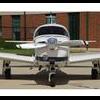


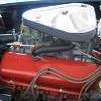
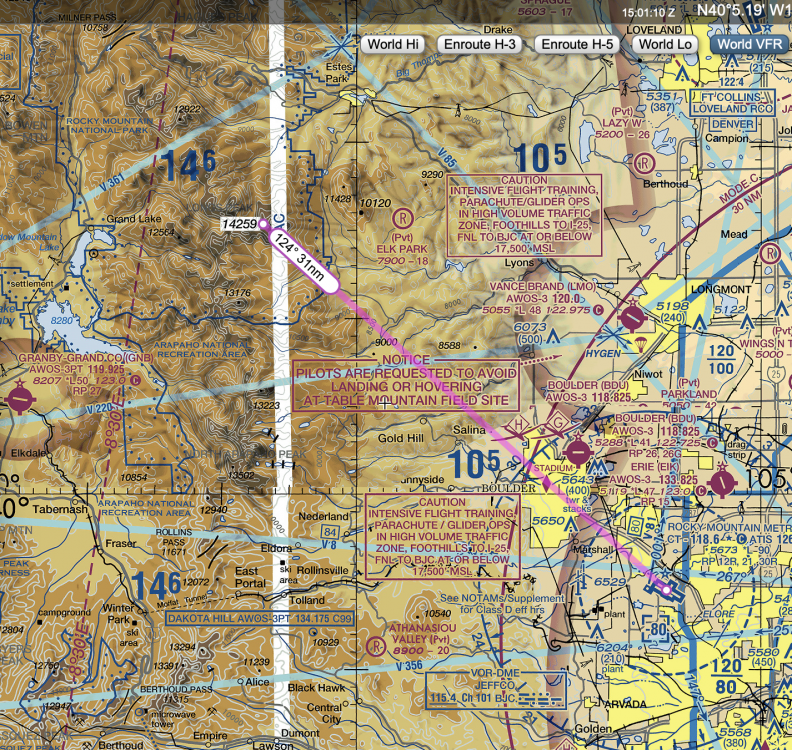

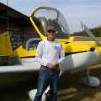
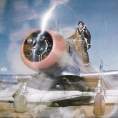
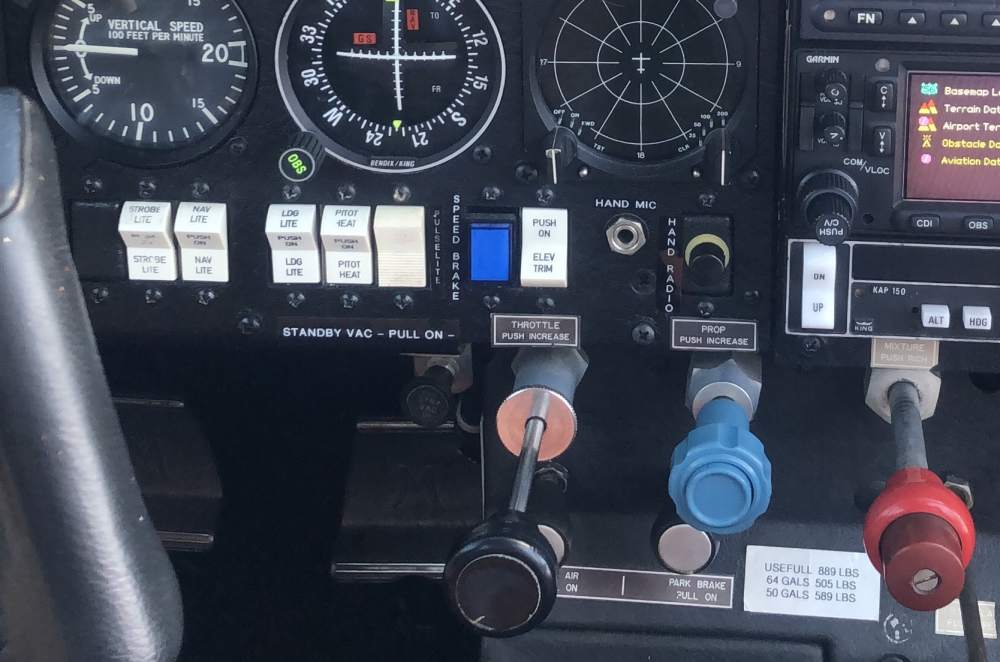




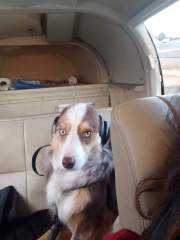
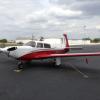
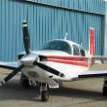





.thumb.png.7c67574d7b28f67b0b4a17760919b1ac.png)





